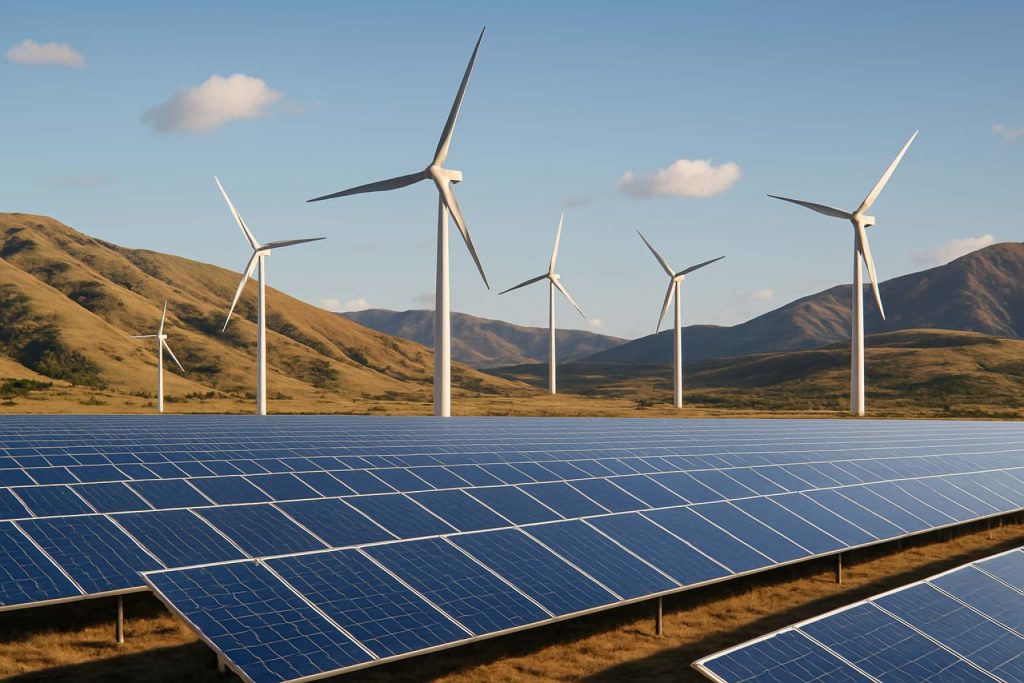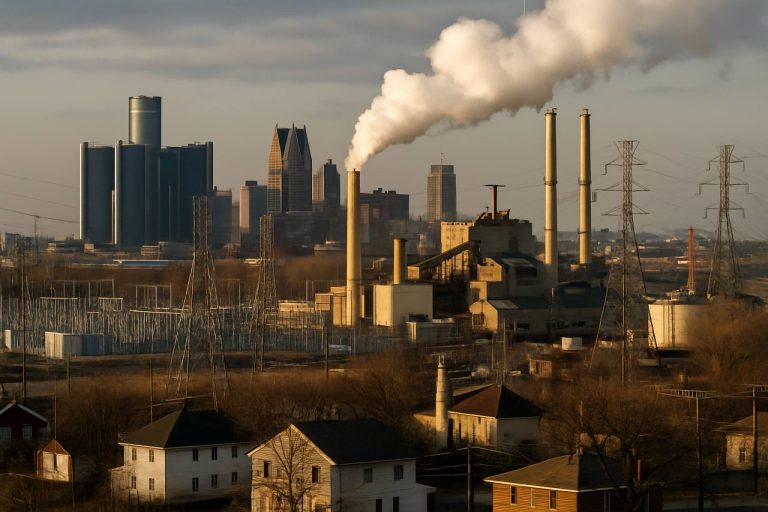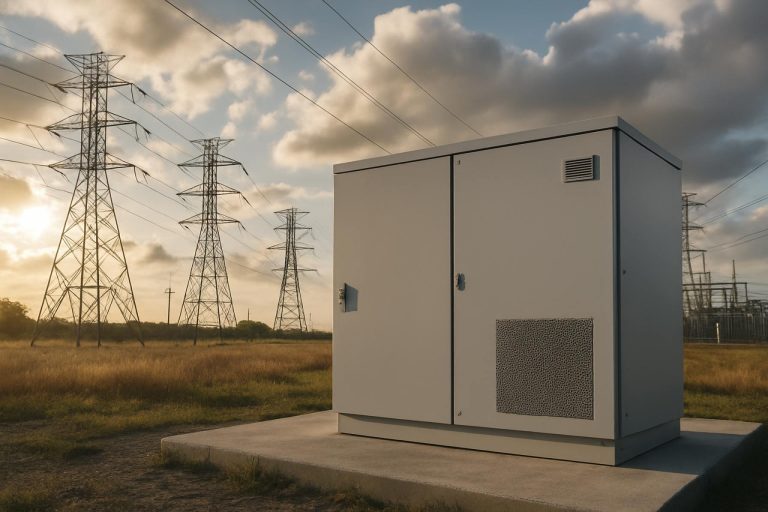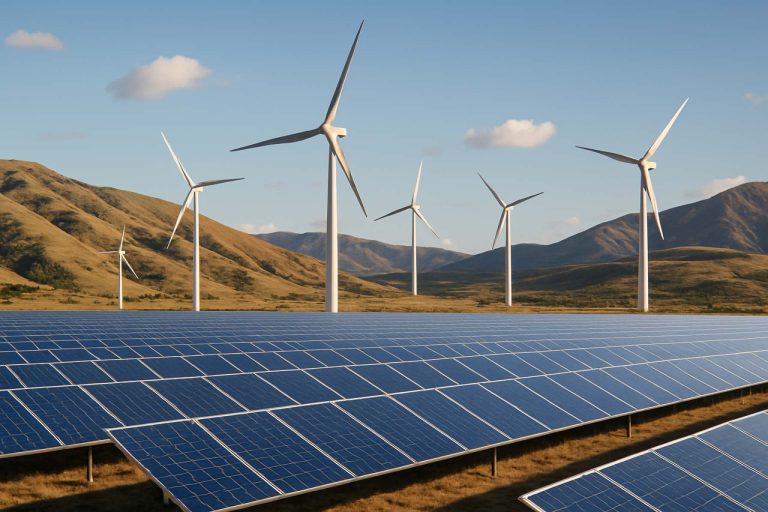
- A Moss Landing plant operated by Verdagy produces green hydrogen through advanced electrolysis, running continuously for over four years.
- More than 200 tonnes of clean hydrogen have been generated, fueling Mainspring Energy’s innovative linear generators throughout California.
- Mainspring’s generators use hydrogen for low-carbon, on-demand power, supporting grid reliability and California’s aggressive climate goals.
- The partnership demonstrates “power circularity,” as Verdagy can use its own generated electricity for sustainable hydrogen production, lowering costs.
- This collaboration highlights green hydrogen’s growing role as a reliable, scalable solution in the transition to clean energy and grid resilience.
On the rugged California coast, where Pacific fog mingles with the hum of industry, a quiet revolution unfolds. A hydrogen production plant stationed in Moss Landing—once the realm of traditional power—now pulses 24 hours a day, transforming water into pure, clean energy. This unassuming facility belongs to Verdagy, a pioneering force in green hydrogen.
For over four years, the plant’s electrolyzers have tirelessly split molecules, chalking up more than 20,000 hours of operation. The result? Over 200 tonnes of hydrogen, coaxed from water, ready to fuel a new chapter in American power generation. Verdagy’s hydrogen now fuels Mainspring Energy’s novel linear generators across California—a partnership signaling a paradigm shift toward low-carbon, reliable electricity.
The linear generator, a sleek marvel engineered by Mainspring, doesn’t burn fuel the way conventional engines do. Instead, it harnesses the chemical energy of hydrogen, delivering on-demand, dispatchable power with minimal emissions. By running on Verdagy’s clean hydrogen, these generators support California’s ambitious climate goals and respond to the state’s pressing grid reliability needs—a critical edge as demand for resilient, renewable energy surges.
The vision doesn’t stop at supply and demand. This partnership may spark a new economic dynamic: by securing Mainspring as both an electricity and hydrogen customer, Verdagy stands to reduce its own operating costs through “power circularity”—using the facility’s own electricity to power electrolysis, creating a self-sustaining, cost-efficient loop.
Hydrogen, once considered a far-flung dream for a sustainable grid, is stepping into the spotlight. With industrial stalwarts turning to green solutions and continuous innovations in electrolyser technology, the hydrogen economy is becoming less of a prospect and more of a practical necessity.
For anyone curious about the winds sweeping through California’s energy sector—and the technology poised to redefine the nation’s electric backbone—the Verdagy-Mainspring collaboration offers more than just statistics. It symbolizes the grit and ingenuity propelling the world’s fifth-largest economy toward a future where sustainability and resilience are not mutually exclusive, but indivisible.
Takeaway: California’s latest energy breakthrough underscores a key lesson—the power to shape a cleaner future often lies in the intersection of bold ideas, proven technology, and the will to innovate. For more on the transformative potential of hydrogen in clean energy, consult industry leaders at energy.gov.
California’s Stealth Hydrogen Revolution: How Verdagy and Mainspring Are Reinventing Clean Power—And What It Means for You
Unpacking Verdagy and Mainspring’s Game-Changing Hydrogen Partnership
California’s Moss Landing is home to a quiet revolution at the intersection of green hydrogen production and cutting-edge generator technology. While the article highlights Verdagy’s green hydrogen plant fueling Mainspring Energy’s innovative linear generators, there’s much more behind this impactful collaboration. Here’s what you need to know—and what this means for the future of clean energy, grid reliability, and everyday consumers.
—
What is Green Hydrogen and Why Is It Such a Big Deal?
Green hydrogen is produced by splitting water into hydrogen and oxygen using renewable electricity via electrolysis. Unlike the more common “grey” or “blue” hydrogen (made from fossil fuels with or without carbon capture), green hydrogen is virtually emissions-free ([IEA](https://www.iea.org)).
– Electrolyzers: Verdagy utilizes advanced electrolyzers, which are at the heart of efficient hydrogen production. These can operate flexibly with variable renewable power—a critical advantage for integrating more solar and wind into the grid.
– Hydrogen as Storage: Green hydrogen isn’t just a fuel; it acts as a massive, flexible energy storage solution, storing renewable energy for use when the sun isn’t shining or the wind isn’t blowing.
—
How-To: Harnessing Hydrogen for Clean Power
1. Water Sourcing: Ensure adequate, sustainably sourced water for the electrolysis process.
2. Renewable Energy Integration: Align hydrogen production times with peak solar or wind to maximize zero-carbon input.
3. Hydrogen Storage: Store hydrogen as compressed gas or liquid, or convert it to ammonia for easier shipping.
4. Power Generation: Use generators, fuel cells, or industrial processes that can run on hydrogen alone.
—
Real-World Use Cases
– Industrial Decarbonization: Sectors like steelmaking and chemicals, which are hard to electrify, can use green hydrogen to cut emissions dramatically ([energy.gov](https://www.energy.gov)).
– Heavy Transport: Hydrogen fuel cells power buses, trucks, trains, and even ships, filling gaps where batteries can’t compete on energy density.
– Backup & Remote Power: Facilities needing highly reliable or off-grid power can tap clean hydrogen for days-long energy supply.
– Grid Balancing: Hydrogen production ramps up or down to help maintain electricity grid stability during periods of surplus or scarcity.
—
Market Forecasts & Industry Trends
– Explosive Growth: The global green hydrogen market is projected to exceed $60 billion by 2030 (Fortune Business Insights, 2023).
– US Incentives: The Inflation Reduction Act and Bipartisan Infrastructure Law earmarked billions for clean hydrogen hubs and tax credits ([energy.gov](https://www.energy.gov)).
– California’s Leadership: The state’s goal of carbon neutrality by 2045 heavily leans on hydrogen for grid reliability and industrial transition.
—
Reviews, Specs & Pricing
– Verdagy Electrolyzers: Known for high efficiency (>85% in lab trials) and extended runtime (20,000+ hours of operation at Moss Landing).
– Mainspring’s Linear Generator:
– Technology: Free piston linear motion, fuel-flexible, minimal NOx emissions.
– Capacity: Scalable from hundreds of kilowatts to multi-megawatt arrays.
– Price: While costs are dropping, green hydrogen generators remain higher priced than traditional diesel or gas but are increasingly competitive thanks to incentives.
—
Controversies & Limitations
– Water Use: Electrolysis requires significant volumes of water—about 9 liters per kg of hydrogen. In drought-prone California, this raises sustainability concerns.
– Electricity Demand: Hydrogen production can be energy-intensive, challenging grid capacity if run on non-renewable power.
– Infrastructure Gaps: Pipelines, storage, and refueling stations for hydrogen lag far behind those for natural gas or gasoline.
—
Security & Sustainability
– CYBERSECURITY: As plants digitalize, infrastructure needs robust protection from cyber threats (see NREL energy security studies).
– Green Certification: Projects like Verdagy seek “green hydrogen” certification to guarantee that only renewable energy is used—a key for sustainability and market value.
—
Insights, Predictions, and Quick Tips
– Near-Term: Expect larger hydrogen “hubs” to appear near major ports and industrial zones, with Moss Landing leading the way.
– Long-Term: Look for hydrogen to partner with long-duration batteries and pumped hydro to build a resilient, 100% clean grid.
– Tips for Businesses: If you operate a facility with high energy demands, now’s the time to investigate hydrogen-ready infrastructure and incentives.
—
Pressing Reader Questions—Answered
– How clean is Verdagy’s hydrogen versus fossil fuels?
Green hydrogen produces zero carbon emissions at the point of use; by contrast, traditional electricity from natural gas emits up to 0.4 kg CO₂/kWh.
– Is it scalable for my city or business?
As manufacturing scales, electrolyzer costs are expected to drop by 50% this decade, making local hydrogen production viable for many industries ([IEA](https://www.iea.org)).
– How does hydrogen boost grid reliability?
Hydrogen generators can firm up variable renewable energy, operating during blackouts, heat waves, or spikes in demand—plugging a major reliability gap.
– Who’s backing the transition?
Major energy companies (Shell, BP) and automakers (Toyota, Hyundai) are investing billions in hydrogen supply chains.
—
Actionable Recommendations
1. Monitor California’s Hydrogen Projects: Policy, funding, and technology breakthroughs set trends for other regions.
2. Look for Hydrogen Incentives: Check federal and local programs for grants, financing, and pilot partnerships.
3. Consider Your Facility’s Transition Path: Evaluate current energy use, backup needs, and futureproofing with hydrogen-ready equipment and expertise.
4. Stay Updated: Follow developments from industry leaders on energy.gov and credible energy think tanks.
—
The Bottom Line
The Verdagy-Mainspring partnership isn’t just a technical showcase—it’s a blueprint for a new era where green hydrogen unlocks clean, reliable, and self-sustaining energy. California’s lead is likely to inspire similar shifts nationwide. Now is a smart time for both energy professionals and savvy consumers to track this rapidly accelerating trend and consider early adoption opportunities in the hydrogen economy.



